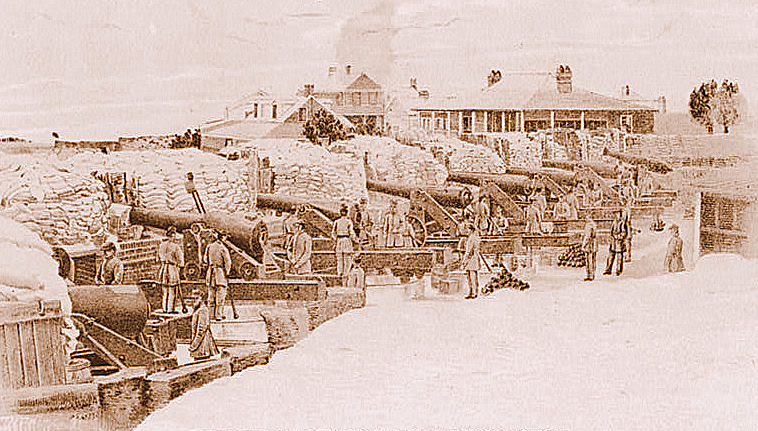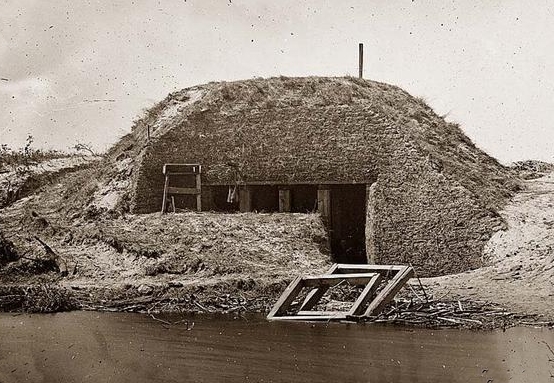The roar of cannon is the first thing heard this morning. They fired all night long at the steamer. Today is my turn for guard again and it happened that I was detailed for guard at Moultrie in the very course of shot and shell form the Yankees. We left camp and started for our post, and as soon as we got in range of shell we crept along by the breastworks as fast as possible until we reached the bomb-proof1. All day long here the shot and shell whizzed directly over our heads, but we were shielded by the bomb-proof and laughed at the danger. A great many struck our bomb-proof but did no great harm, but safe as we were, we found the place very uncomfortable, on account of the sand continually falling in our eyes, and a part of us resolved to risk a little for the sake of comfort, consequently we came out of the bomb-proof and took our seats behind the breastworks. We sat here a long time, gazing at the shells whistling by, and at last decided we were perfectly safe here, but we were too quick in our decision, for scarcely had we done so when a sixty pound shell fell with amazing force in three feet of us, but fortunately did not burst. If it had done so but few would have escaped. Night at last came and ushered in a painful scene. A poor woman, a soldier’s wife, who had come from home to see him, was brought in the bomb-proof with one arm shot off and dreadful wound in the leg. Her arm was immediately amputated and her other wound, being dressed, she was sent to the hospital. The same shell that wounded her killed a man. Another man was also brought in with his arm shot all to pieces. It also was amputated. All night long the Yanks shelled, but their fire was somewhat slackened near day and only an occasional shot was heard in the morning.
1 19th-Century designation given to any edifice, shelter, or dugout within a fortified position, specifically reinforced or strengthened so as to provide additional security or refuge against hostile artillery-shelling. Fort Moultrie’s small old service-magazines and Western Postern tunnel, for example, were expanded and buried under extra mounds of sand during the summer of 1863, so as to provide “bomb-proof shelters” for its defenders against constant Union long-range fire.


